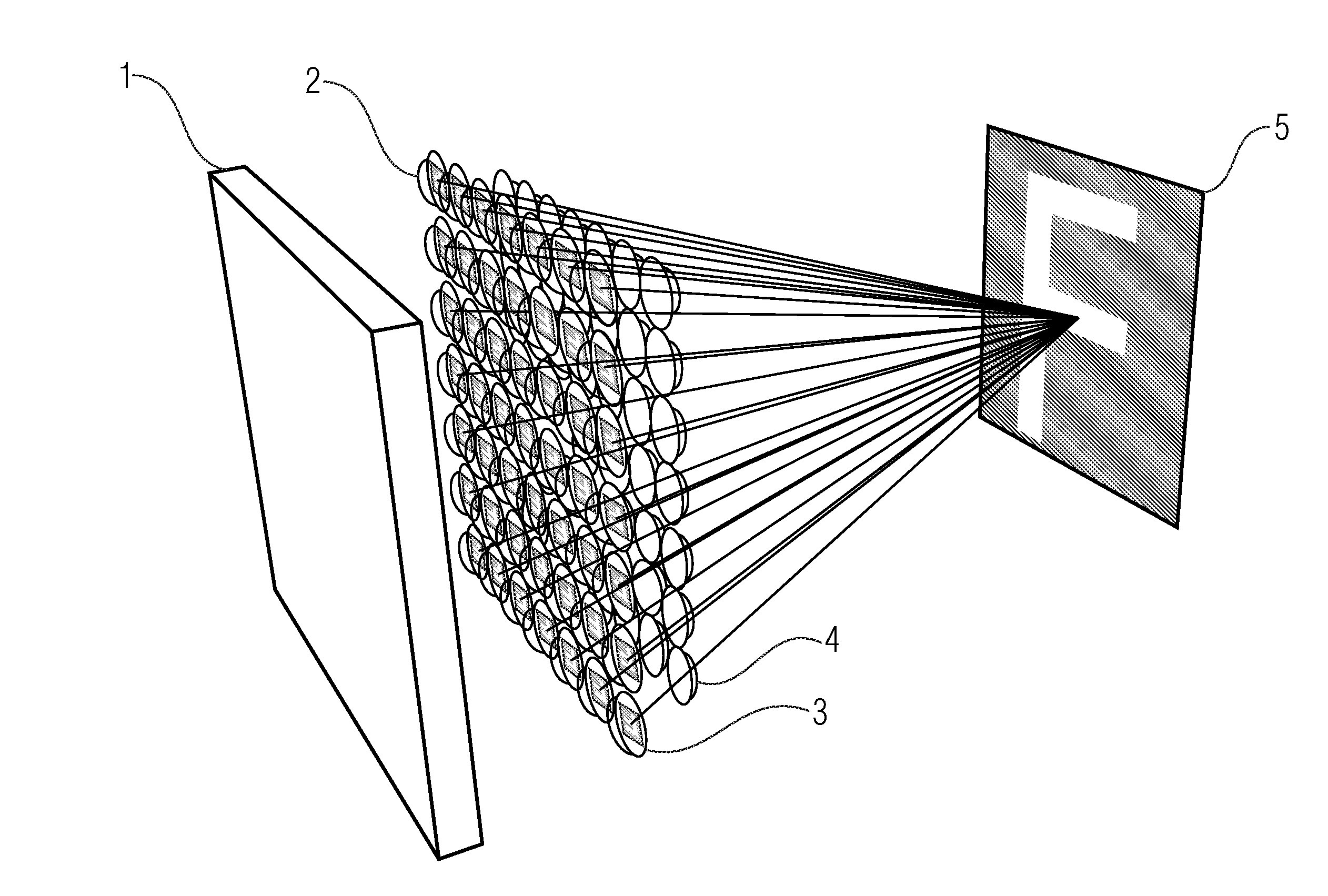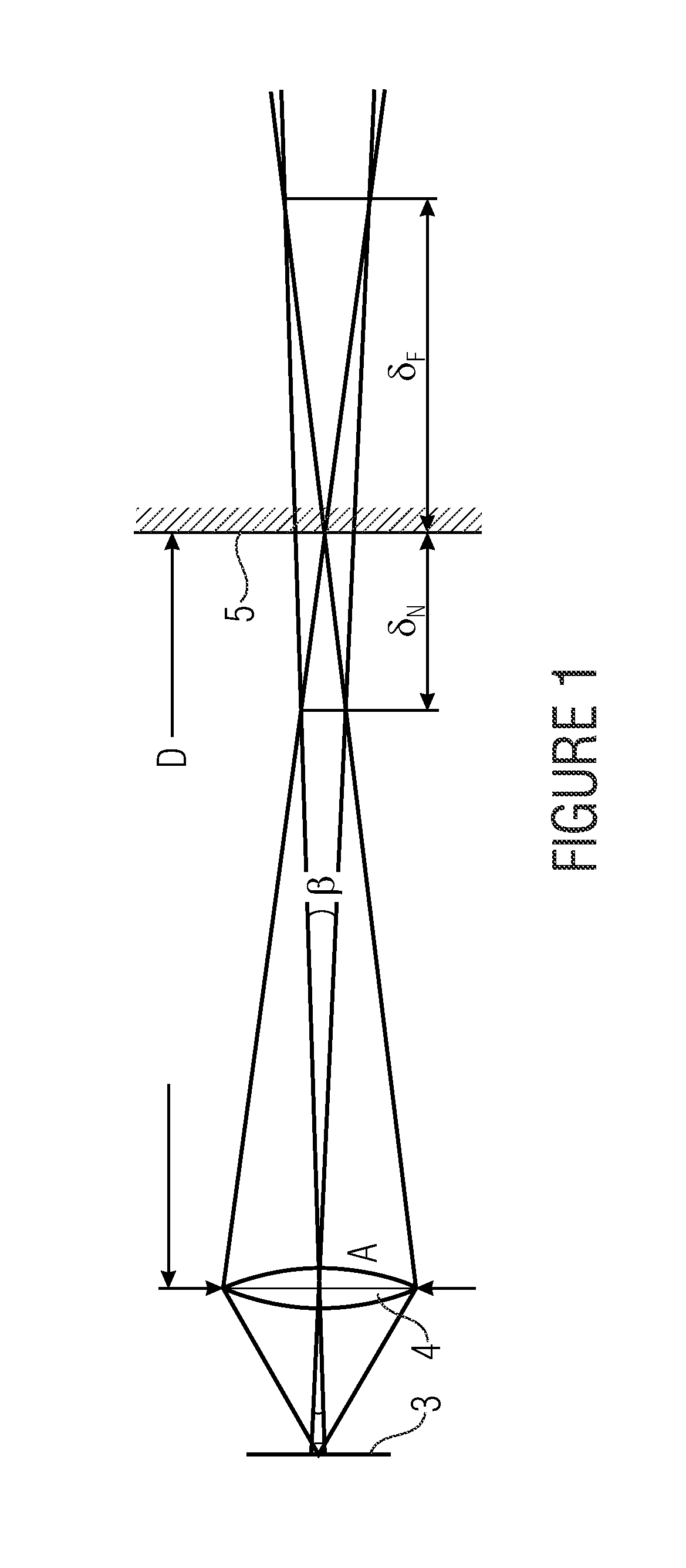Projection display with multi-channel optics with non-circular overall aperture
a projection display and overall aperture technology, applied in projectors, color televisions, television systems, etc., can solve the problems of reducing the effective area available for light transmission, large distance variations within the projected image, and reducing the luminosity, so as to improve the subjective focus behavior of the projection system
- Summary
- Abstract
- Description
- Claims
- Application Information
AI Technical Summary
Benefits of technology
Problems solved by technology
Method used
Image
Examples
Embodiment Construction
[0054]Before the present invention will be discussed in more detail below based on the figures, it should be noted that in the following embodiments the same elements or functionally equal elements are provided with the same reference numbers in the figures. Thus, a description of elements having the same reference numbers is inter-exchangeable and / or can be used in different embodiments.
[0055]The embodiments described below relate to the manipulation (e.g. increasing the depth of focus) with high requirements with respect to system compactness and projected light flux.
[0056]The screen-side depth of focus of a projector results according to geometrical considerations from the projection distance D, the pupil extension A and the acceptable out-of-focus angle β according to FIG. 1 by the following relation
δN,F=D2β(A±Dβ)(1)
[0057](from “Modern Optical Engineering” by W. J. Smith, McGraw-Hill, 2007). FIG. 1 shows a 2D layout for deriving the depth of focus of a classical single-aperture ...
PUM
 Login to View More
Login to View More Abstract
Description
Claims
Application Information
 Login to View More
Login to View More - R&D
- Intellectual Property
- Life Sciences
- Materials
- Tech Scout
- Unparalleled Data Quality
- Higher Quality Content
- 60% Fewer Hallucinations
Browse by: Latest US Patents, China's latest patents, Technical Efficacy Thesaurus, Application Domain, Technology Topic, Popular Technical Reports.
© 2025 PatSnap. All rights reserved.Legal|Privacy policy|Modern Slavery Act Transparency Statement|Sitemap|About US| Contact US: help@patsnap.com



